
At primary 5, students have gone through a year transitioning into upper primary math. They are now expected to face longer word problems and questions with multiple steps. It is also the time for them to learn content crucial for PSLE and start their preparations. At this important stage, students need to build their skills and confidence, and avoid making careless math mistakes.
Understanding common mistakes and knowing how to identify them can help students to avoid losing marks. Spark Education has started the Top 3 Common Math Mistakes to Avoid series to provide essential advice! Hear from Teacher Sharlynn from the Spark Math teaching team as she shares valuable tips and tricks. Read on to find out the top 3 common mistakes in P5 and how you can avoid careless math errors!
Common mistake #1: Fraction with Units
Fractions are a big topic in primary math; students will learn fractions in greater depth in P5. They will learn about adding and subtracting mixed numbers (comprised of whole numbers and fractions), converting fractions to decimals, and more. The problem sums in P5 are more challenging as they involve heuristics, and test students’ ability to look out for details and accurately solve them.
Common Mistake
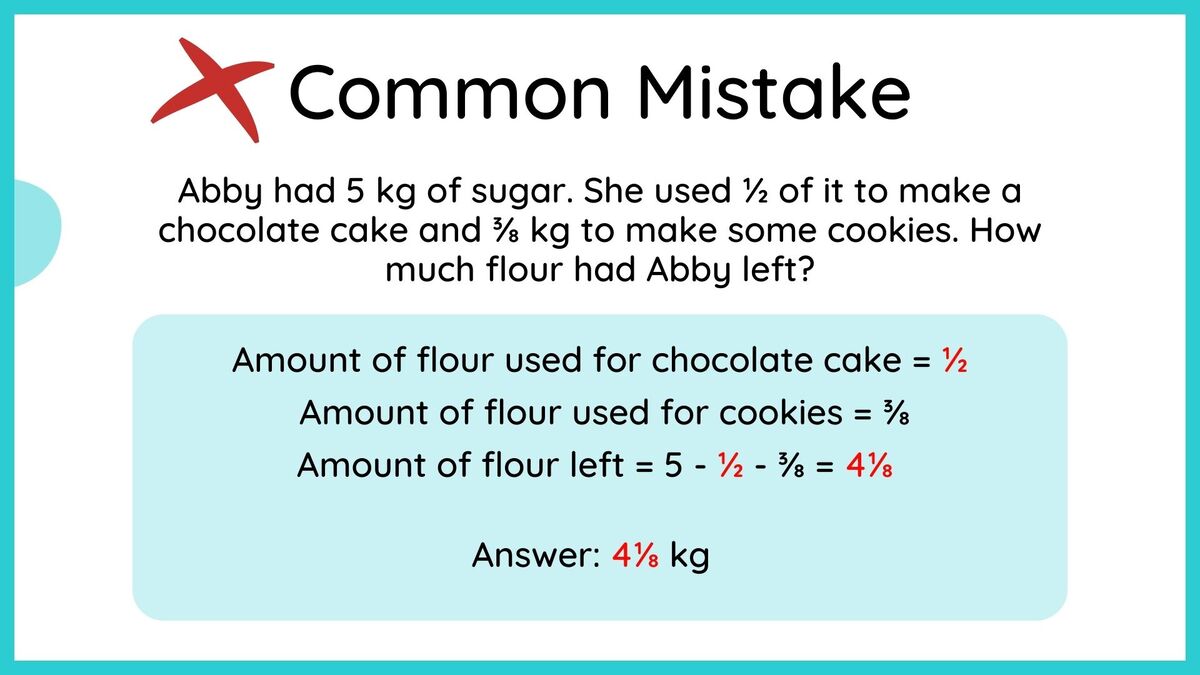
This is a common mistake easily made by students for fractions-related questions. When students see 1/2 in a question, they can mistake it as “1/2 kg” and use that in their calculations. For the above question, compare “1/2 kg” and “1/2 of 5 kg” — this will equate to 1/2 kg and 2 1/2 kg, which makes a lot of difference.
Solution
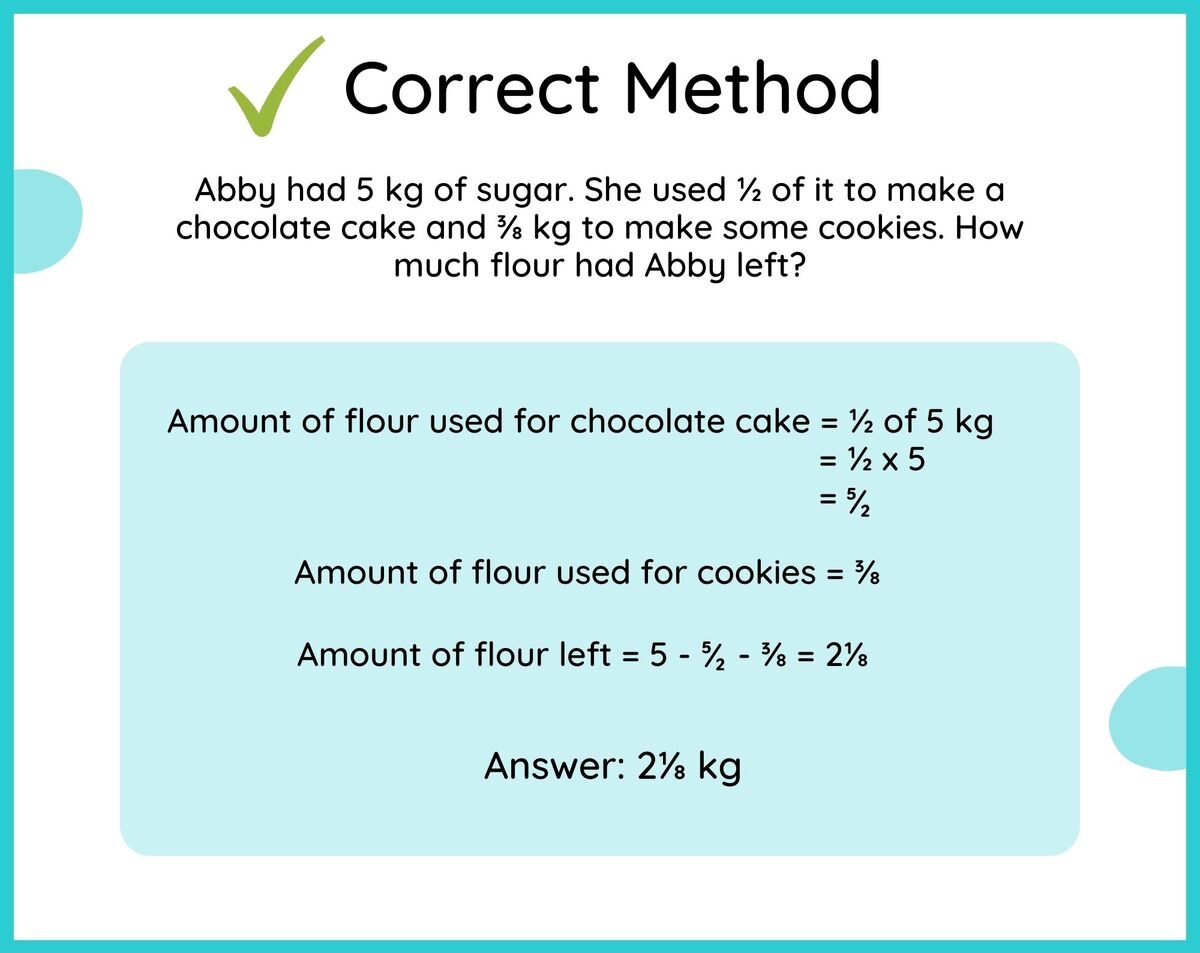
Students should understand that at upper primary, problem sums will require them to take note of more details. They need to be familiar with adding and subtracting mixed numbers swiftly and accurately. One important tip is to always pay attention to the presence or absence of units in numbers. They mean differently and will result in different steps to take.
Common Mistake #2: Poor Conceptual Understanding
Statistics is a category that makes up a crucial part of the P5 math syllabus. Students will learn how to interpret information from a set of data. The questions will challenge students’ ability to apply mathematical theories to real-life scenarios at a higher level.
Common Mistake
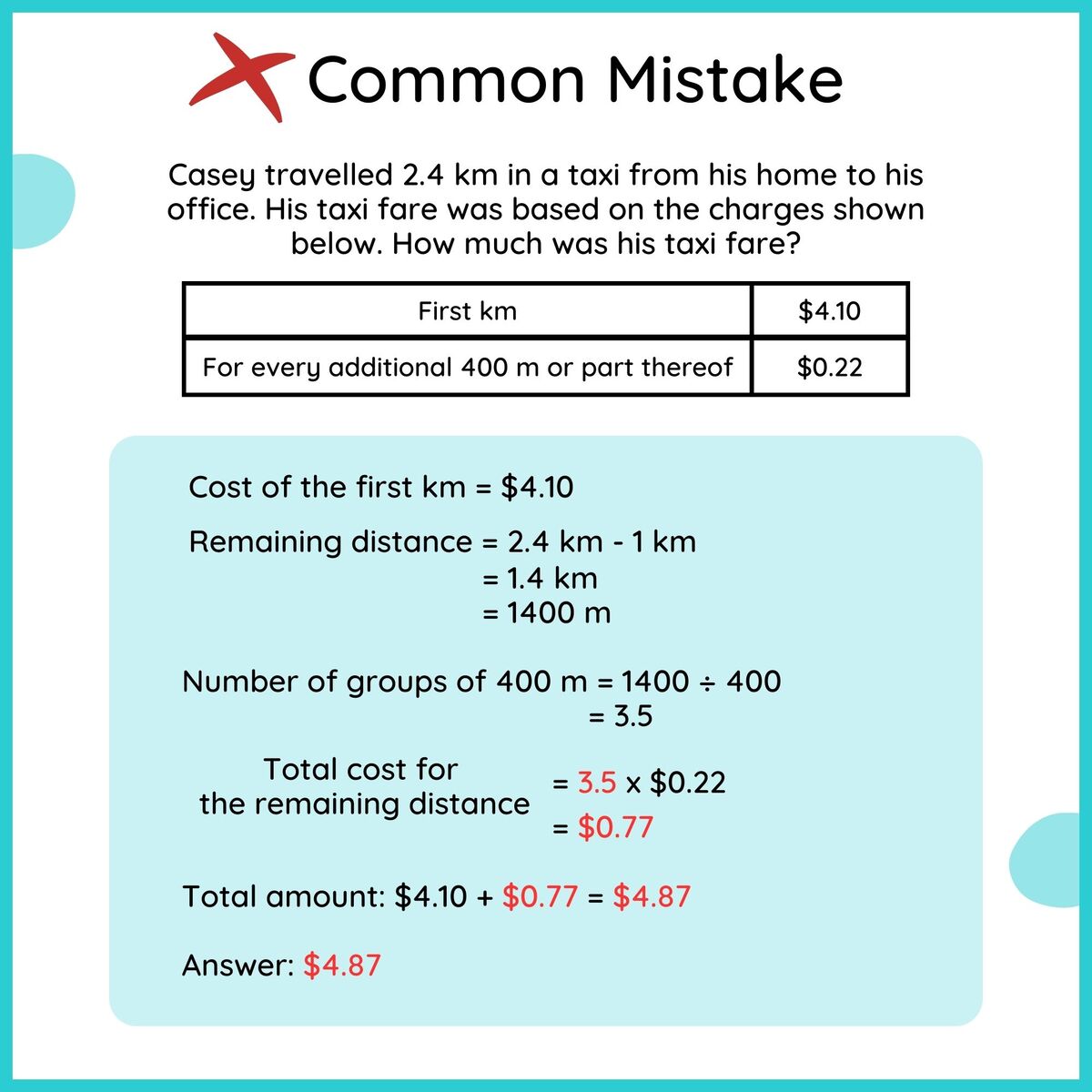
In this question, the part where many students often make mistakes is the concept of “part thereof”. They may not know what to do when the remaining distance is shorter than 400 m. A common mistake students usually make is they overlook they need to calculate the cost in groups instead of actual proportion, resulting in an inaccurate answer.
Solution
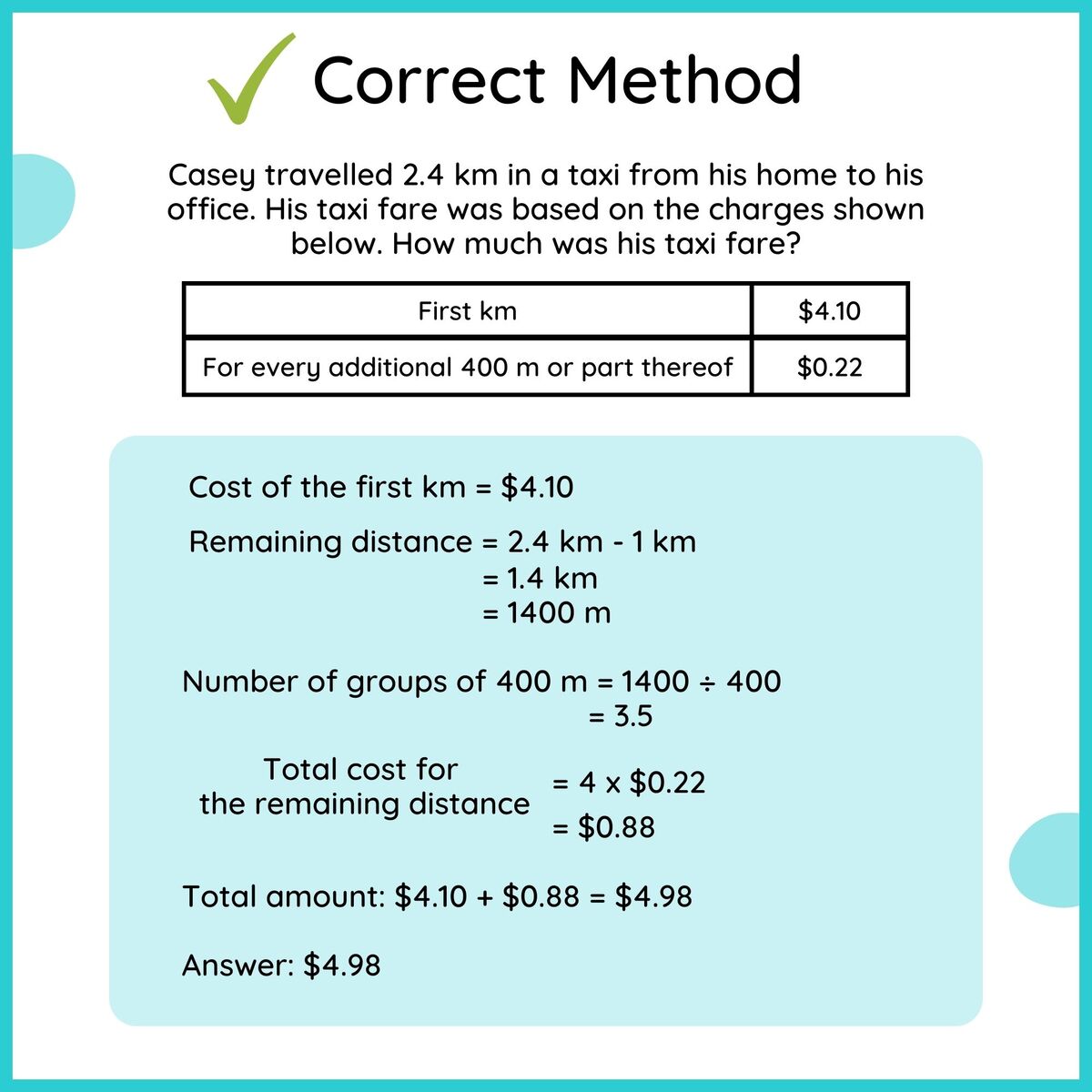
For this type of questions, students need to know how to calculate the charge for the remaining distance. They should understand the concept of “part thereof” and know that any remaining distance shorter than 400 m is considered a group belonging to the “For every additional 400 m or part thereof” statement, which is charged $0.22.
Since the additional distance after the first kilometer is charged $0.22 for each group of 400 m, students can round up the remaining distance of 1.4 km or 1400 m to 4 groups of 400 m, and use this to calculate Casey’s taxi fare.
Common Mistake #3: Wrong conversion of units and carelessness
Ratios are one of the new topics students will learn in P5. This is an important topic as ratios will be covered in P5 and P6. The longer word problem sums in P5 math also test students’ reading comprehension ability.
Common Mistake
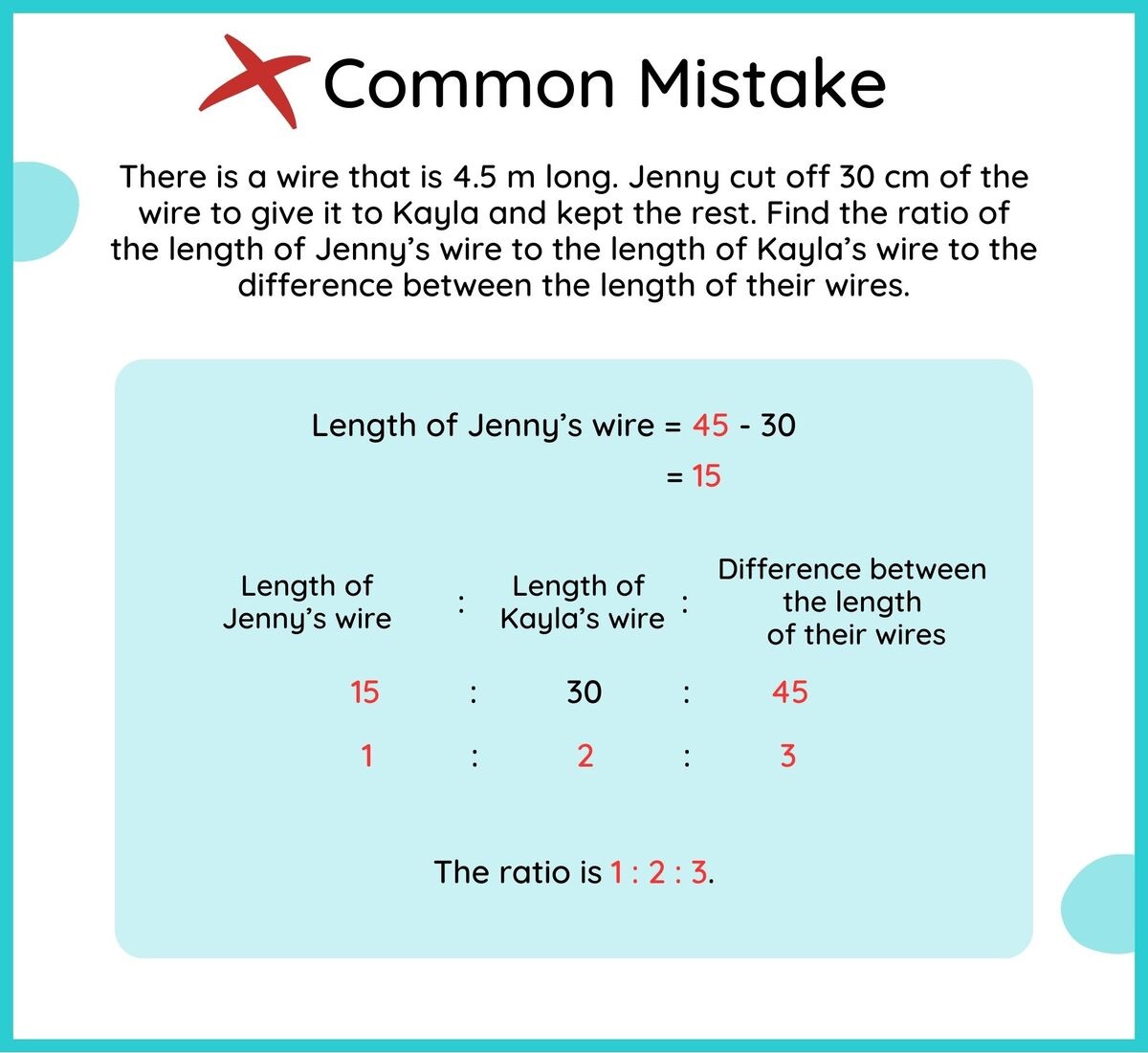
When students are sitting for a timed practice or paper under exam stress conditions, they can easily misread the information given. Students may not notice that the wire’s length is 4.5 metres, while Jenny cut off 30 centimetres of the wire. Mixing this up will cause the calculations of measurement to be inaccurate.
Another common mistake is students may be careless in reading the question, which leads them to use the wrong values. The question above asks for the difference between the length of Jenny’s and Kayla’s wires. However, the student here calculated the total length of the wire.
Solution
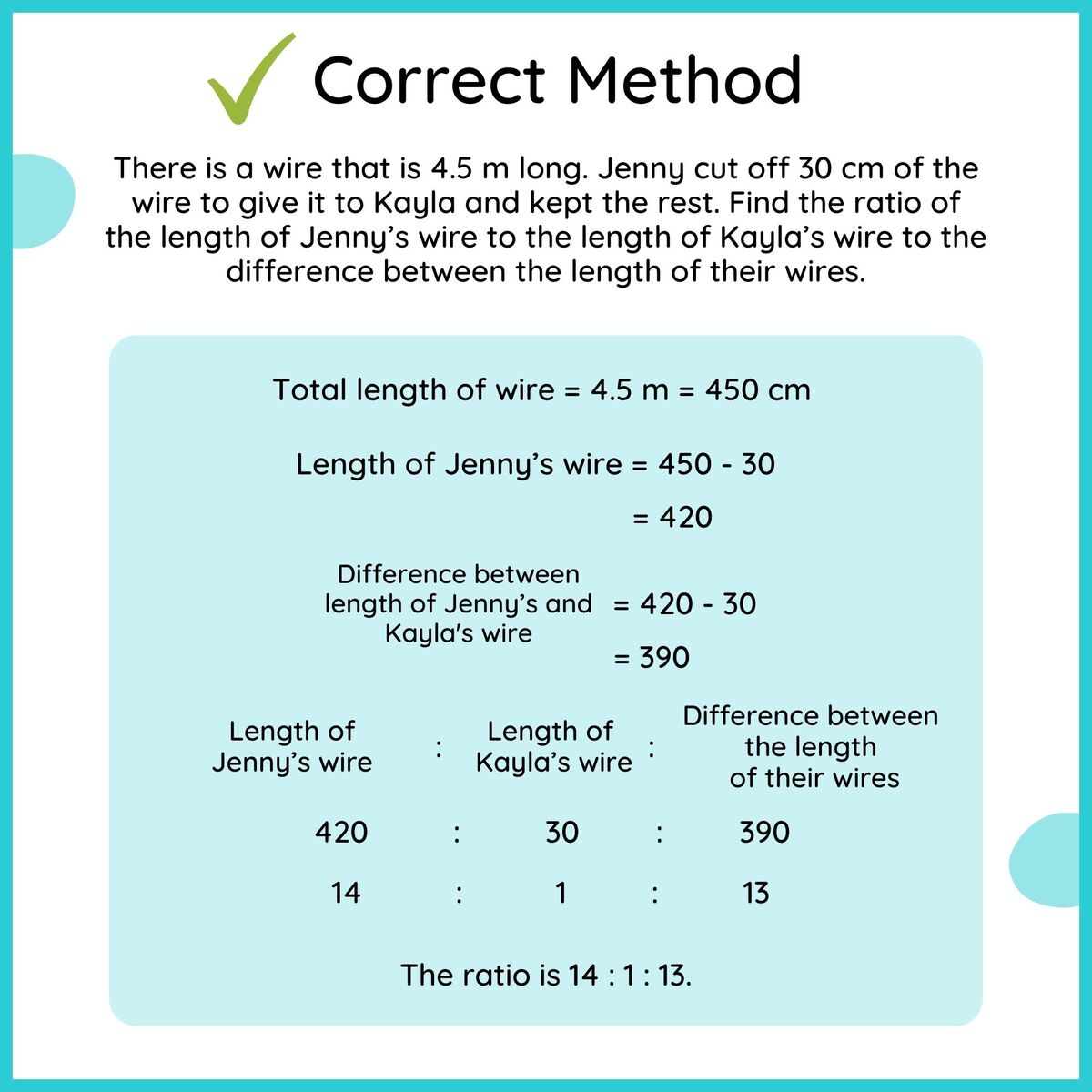
Students should cultivate the habit of checking their work as part of their problem-solving process. A good method is to use a highlighter or pen to underline the units when they read the question. Converting units of measurement is an essential skill that will be frequently tested at P5, so students should practice converting units quickly and accurately.
Problem sums at P5 contain more details and require deeper thinking before they start calculating. One tip to prevent carelessness and common mistakes is to identify the keywords used in the question. In this question, the keyword “difference” provides a helpful hint that tells students to not only compare two values but also do a subtraction operation–subtracting the number with the smallest value from the number with the largest value–to derive their solution.
Overcome mistakes and become a math ace
In preparation for PSLE, students need to delve deeper into mathematical problem solving and master new concepts in ratios and percentages. They need to learn how to handle word problems that require process thinking and application of appropriate strategies to solve. Some students may find P5 math daunting due to the increased complexity. To overcome this, ensure students have ample practice and learn how to avoid the common math mistakes in solving word problems. These essential tips and tricks will help students in their journey toward achieving their math excellence.
Check out other posts in our Top 3 Common Math Mistakes and How to Avoid Them series:
At Spark Math by Spark Education, we believe that every child has the potential to excel in math. Take a look at our programmes and learn more about how Spark Math develops children into confident and motivated math learners! To get started, sign up for a free trial class.




